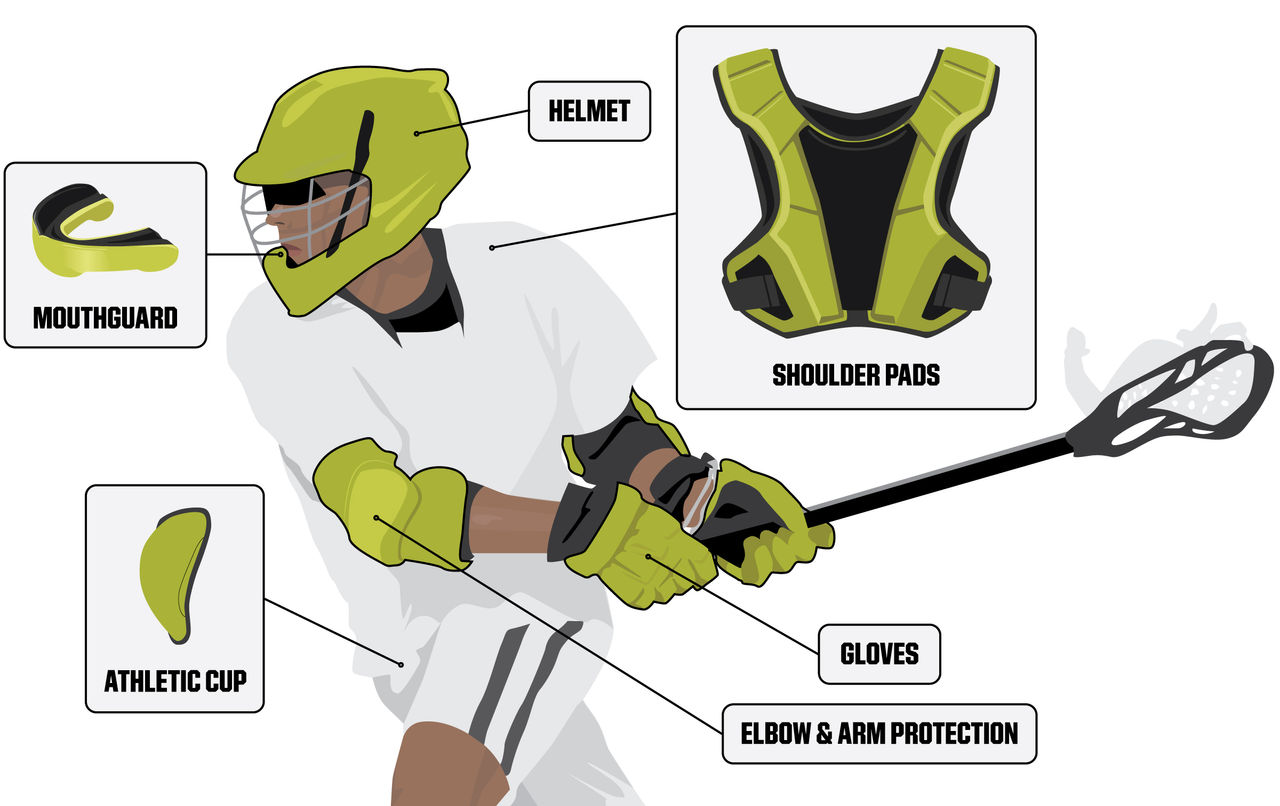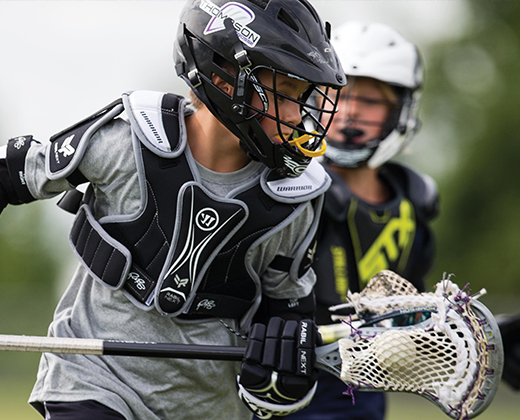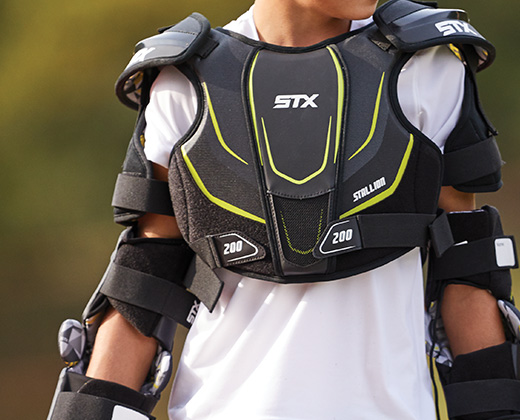The Basics of Men's Lacrosse Protective Gear
Learn the basics of the protective equipment you need to suit up for this fast-paced, high-impact game.

Last Updated: March 16, 2022
When you’re playing men’s lacrosse, there’s a whole host of protective gear you’re required to wear. You need to be protected from head to toe, but knowing exactly what you need can be overwhelming for a newcomer to the sport.
Fortunately, Pro Tips is here to provide you with some guidance navigating the maze of these basic protective options.
LACROSSE HELMETS
Perhaps the most vital piece of equipment you’ll need to choose is your lacrosse helmet.
You’ll need one that meets NOCSAE standards, is aerodynamic, boasts an adjustable chin strap, and is lightweight. They often include a number of other features to choose from as well, like different styles, customizable fitting systems and varying levels of comfort.
No matter what, though, your helmet needs to fit. Sizes are divided into youth and adult. They are typically designed to be one size fits all within their age category, but it’s important to test the fit once you’ve tightened the adjustable straps. When you move your head, your helmet should remain in place, only moving snuggly with the skin of your forehead.
For more details on what to look for in a lacrosse helmet, check out our full buying guide.
LACROSSE SHOULDER PADS
Important Notice: As of January 1, 2022, all lacrosse shoulder pads must meet requirements set by the National Operating Committee on Standards for Athletic Equipment (NOCSAE) and be certified by the Safety Equipment Institute (SEI). Check to make sure your pads have a label featuring both the NOCSAE and SEI logos (image below). If pads do not have this label, they cannot be used in competitive play.
Shop NOCSAE Certified Lacrosse Shoulder Pads at DICK’S
What else should you look for when choosing shoulder pads? Models can range in weight and thickness of padding, depending on the level of protection offered and the padding technology. Some include built-in bicep, chest, or rib protection. Others feature hard plates that offer a boost in stability but cut down on flexibility.
Generally speaking, you have the choice of three styles: traditional, hybrid, and shoulder liners. These range from the heaviest and most protective to the lightest and most flexible. To determine which is best for you, read more about how to choose lacrosse shoulder pads.
LACROSSE ELBOW AND ARM PROTECTION
Because different positions require varying types of protection, there are three different lacrosse arm protection options to choose from.
For attackmen who are at the greatest risk of checks, a full arm guard offers vital protection, usually with hard plates all the way down the arm and a separate elbow cap. These are designed to provide maximum protection while still allowing a large range of motion.
If you’re a midfielder or a defender, you may consider arm pads, which are more flexible for greater mobility, although they cover less of your arm. They’re usually constructed from one single piece of material, unlike the segmented full-arm guard.
Elite defensive players sometimes opt for the much smaller elbow pad, which helps protect the elbow from abrasive checks, but not much of the rest of the arm. Elbow pads offer the greatest mobility of the three, making them the preferred model of experienced players who have achieved genuine mastery of the game and doesn’t encounter checks often.
Discover more about the different types of arm protection and their features with our arm protection buying guide to help you find the one that’s right for your game.
LACROSSE MOUTHGUARDS
Mouthguards are designed to protect your mouth, teeth, and, sometimes, lips. They are a necessary part of any protective gear set, and come in a variety of models, to fit you best.
There are mouthguards that can be molded to the precise shape of your teeth and models that include an external shield called a lip guard. You may want to consider getting a mouthguard that hooks to your facemask so that it doesn’t fall out and get lost during game action. Choose the style that suits you best in a highly visible, bright color – a requirement for men’s lacrosse.
LACROSSE GLOVES
Of all the gear you’ll wear, gloves are the most detailed, with a design that was painstakingly improved over time. Their complex design exists to protect your hands without limiting your range of motion.
Most modern lacrosse gloves have segmented padding with breaks at every joint, with thick padding and strategically placed mesh for ventilation. Some models include added reinforcement in the fingers — especially the thumb — and hard plating on the back of the hand. They often also feature a wrist guard, which can vary in length, with an adjustable wrist strap.
Gloves should fit snugly on your fingers so that your hand won’t slip around inside. Not sure what type to choose? Learn more about the different features of our lacrosse glove buying guide.
LACROSSE ATHLETIC CUPS
No suit of armor is complete without groin protection. Protecting this area is important, but comfort should also be a prime consideration.
Modern athletic cups have made striking this balance easier by providing polymer options and even gel pads around the edges to keep them from digging into your skin. Some cups include steel plates for even more serious protection.
Before you set out to find your athletic cup, consider all the options discussed in our buying guide.
Keep this information in mind and you’ll have what you need to navigate the complex world of lacrosse protective gear. Focus on the level of protection, comfort, and functionality and you can make sure you’re armed before the season begins.










